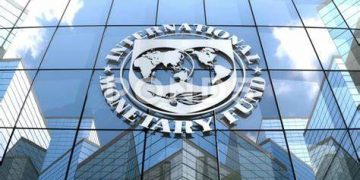By Chioma Iruke
The International Monetary Fund (IMF) has in its latest report on Financial Access Survey (FAS) 2021 Trends and Developments, stated that the number of borrowers in Nigeria approaching financial institutions for loans jumped to its highest level in five years.
According to the report, the number of borrowers increased to 29.61 per 1,000 adults in 2020, the highest in five years from 23.81 per 1,000 adults in 2016.
This was even as the IMF noted that the number of commercial banks in Nigeria branches per 100,000 adults dropped to 4.45 in 2020 from 4.78 in 2019.
Also, the number of Automated Teller Machines (ATM) of commercial banks declined to 16.15 per 100,000 adults in 2020 compared with 17.19 per 100,000 Nigerian adults in 2019.
What this means is that 234 commercial bank branches and 649 Automated Teller Machines, ATMs, were closed in 2019.
IMF also showed that the outstanding deposits with commercial banks per percentage of GDP rose to 20.50 in 2020 as against 16.31 in 2019.
While outstanding loans from the deposit money banks increased to 12.93 per percentage of GDP in 2020 from 11.80 in 2019.
“This edition of the FAS Trends and Developments showcases some evidence on the impact of the COVID-19 pandemic on financial inclusion. Aggregated data from the current round suggest that both access to and use of financial services at commercial banks continued to be stable despite the pandemic even though country-level data point to some reversals.
“Use of digital financial services grew during the past year, helping undisrupted access to financial services. Data for SMEs and women show mixed outcomes for these vulnerable groups,” the IMF stated.




































